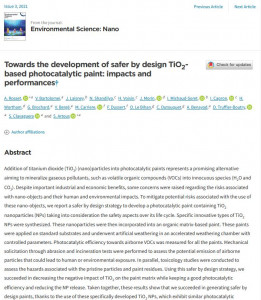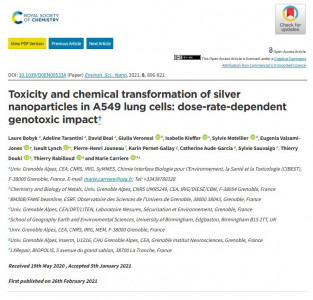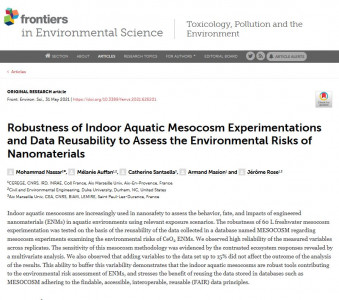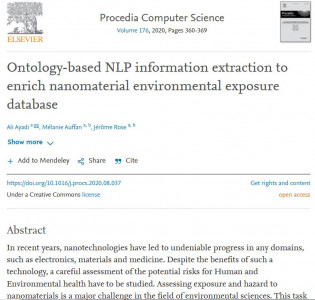Article on "Elaboration and Characterization of Active Films Containing Iron–Montmorillonite Nanocomposites for O2 Scavenging." by Kombaya-Touckia-Linin, E. M., Gaucel, S., Sougrati, M. T., Stievano, L., Gontard, N., & Guillard, V. (2019).
Abstract:
Iron particles of sizes between 6 and 20 nm forming aggregates of 57 ± 17 nm were synthesized by chemical reduction of iron precursors on the surface of montmorillonite (MMT). This active MMT-Fe powder was then uniformly distributed in a linear low-density polyethylene (LLDPE) matrix by extrusion at atmospheric conditions, as confirmed by wide-angle X-ray scattering (WAXS), which also detected a partial exfoliation of the nanoclays. Thermogravimetric analysis (TGA) did not detect any significant modification of the degradation temperature between nanocomposites and active nanocomposites. 57Fe Mössbauer spectroscopy evidenced the formation of a majority of iron boride in MMT-Fe as well as in the active film containing it. The LLDPE.Fu15.MMT-Fe3.75 and LLDPE.Fu15.MMT-Fe6.25 films had oxygen-scavenging capacities of 0.031 ± 0.002 and 0.055 ± 0.009 g(O2)/g(Fe), respectively, while the neat powder had an adsorption capacity of 0.122 g(O2)/g(Fe). This result confirms that the fresh film samples were partially oxidized shortly after thermomechanical processing (60% of oxidized species according to Mössbauer spectroscopy). No significant difference in oxygen permeability was observed when MMT-Fe was added. This was related to the relatively small film surface used for measuring the permeability. The reaction–diffusion model proposed here was able to reproduce the observed data of O2 adsorption in an active nanocomposite, which validated the O2 adsorption model previously developed for dried MMT-Fe powder.









